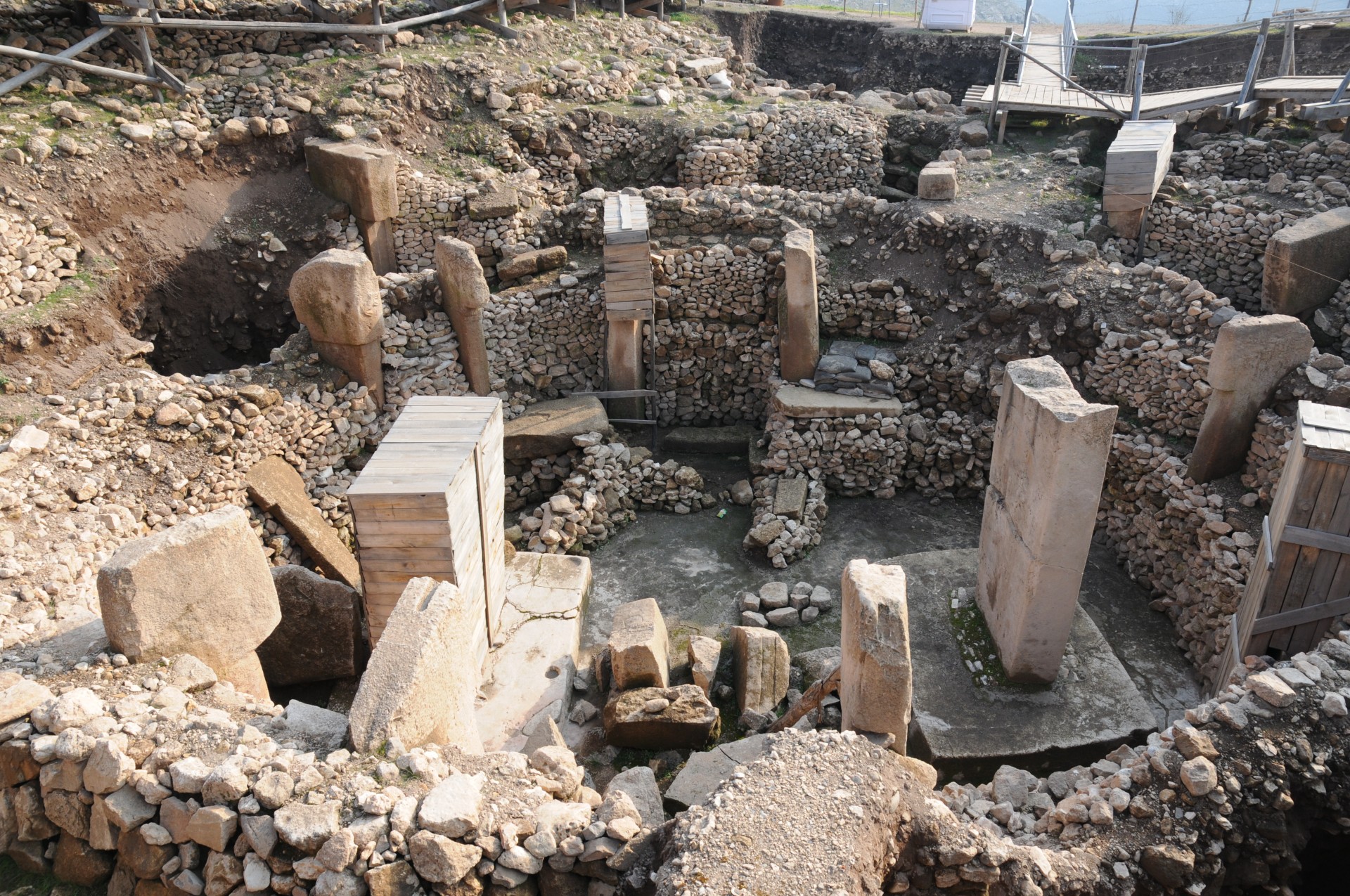
Göbeklitepe, Late Hittities, Mount Nemrut and Southeastern Anatolia
Göbeklitepe, Late Hittites, Mount Nemrut and Southeastern Turkey
Karatepe National Park, Yasemek Hittite Sculpture Open Air Museum, Mount Nemrut, Gaziantep, Halfeti, Zeugma, Urfa, and Gobeklitepe.
Day 1/ Arrival / Adana - Gaziantep
Meet with your guide latest at 09:00 a.m. at the Adana Airport. Our first stop is Karatepe Aslantas National Park. The Hittite fortress of Karatepe was founded in the 8th century B.C. by Azatiwatis, ruler of the plain of Adana, as a frontier castle against the wild hordes lurking in the north. During excavations an important bilingual Phoenician and Hittite hieroglyphic inscription was found that enabled archaeologists to decipher Hittite hieroglyphics. After having our lunch at Kozan, we will continue to an open-air museum that was originally used as a sculpture atelier by Hittites. Afterwards we will continue to Gaziantep. Dinner and Overnight at Gaziantep. (L/ D)
Day 2 / Kahta / Zeugma - Kahta
Today we are starting our day by visiting the world famous Archaeological Museum of Gaziantep with collections from Neolithic and the Hittite ages as well as the Roman and Commagene times. Recently, the museum acquired the spectacular Roman mosaics discovered in Zeugma regarded as unparalleled masterpieces of Roman art. Afterwards we will continue to Roman frontier city of Zeugma, strategically located on the Euphrates River. Hidden for centuries under thick layers of dirt that almost completely obscured its former grandeur, the city has been remarkably well preserved. Here, high ranking Roman officials, army officers and wealthy merchants built great courtyard houses containing fine works of art including exquisite mosaic floors. It is not surprising that many have labeled Zeugma the “Turkish Pompeii.” The Birecik dam and hydroelectric plant is now complete, and the lake formed by the dam is beginning to inundate part of this important site. Dominating the city is the citadel where fortifications date back to the Roman times and perhaps earlier. Later that day, we will continue to Halfeti to have our lunch and make a boat tour at Halfeti reservoir. Afterwards we will continue to Kahta. Dinner and overnight at Kahta. ( B/ L / D)
Day 3 / Nemrut Mountain / Sanliurfa
Our first step in the morning is Mount Nemrut. The Kingdom of Commagene emerged as a Roman puppet state in the first century BC. The most renowned ruler was King Antiochus I, an Armenian king whose lineage connected him to the Seleucids, Ptolemies, and Macedonians. He ruled the territory in the 1st century B.C. and built his extraordinary mausoleum on the summit of Mt. Nemrut, now a UNESCO World Heritage Site. Certainly one of the most extraordinary tombs in the world, from the spectacular sanctuary we can see for almost fifty miles across the Mesopotamian Plain. Our climb takes us to both the East and West Terraces to see the huge statues of Hellenistic gods – Apollo, Zeus, Fortuna – with the king prominently seated among them. The western terrace contains a large slab with a lion, showing the arrangement of stars and the planets Jupiter, Mercury and Mars, and due to the astronomical alignments, it is believed to have been a place for religious ceremonies. After Nemrut our next stop is Arsameia. Dominated by a large relief of the Persian god, Mithra, Arsameia was the tomb that Antiochus built for his father. Seen here is a large stele depicting this god, also known as Apollo the sun god, wearing a cap with sunrays radiating from it. Behind the monument is a cave entrance leading to an underground room thought to have been built for Mithras-worshipping rites. The tumulus of Karakus was built to house the burials of Commagene queens and princesses. The monumental tomb, constructed by Commagene’s King Mithradates II, was dedicated to his mother Isas. To get there, we cross Cendere, the Roman bridge built to honor Septimus Severus that spans the Kahta River in one single arch. Continue to Sanliurfa. Dinner and overnight at Sanliurfa.(B/L/D)
Day 4 / Göbeklitepe / Departure
Today in the early morning we will visit Göbeklitepe that has caused quite a stir in the international news in the last decade and id Turkey’s most recent UNESCO World Heritage Site, designated in 2018. According to the archaeologists working here, Göbeklitepe may be the world’s oldest temple dating back to 12,000 years ago and predating Stonehenge by 6,000 years. Excavations have uncovered several circles of standing stones and inside each are two 16-foot tall T-shaped pillars towering over the ring of shorter stones. Many of these are richly adorned with carvings of foxes, vultures, lions and other wild animals. After our tour, drive back to Urfa, or Şanlıurfa, with origins that are rooted in the Bronze Age. Renamed Edessa in the 4th century BC, it became a famous religious and intellectual center during the Byzantine period. After having our lunch here, we will visit Urfa Museum and transfer to airport for departure. (B/L)
Lunch included
What’s included:
Not Included
For further information: [email protected] / + 90 532 597 71 97 / WhatsApp